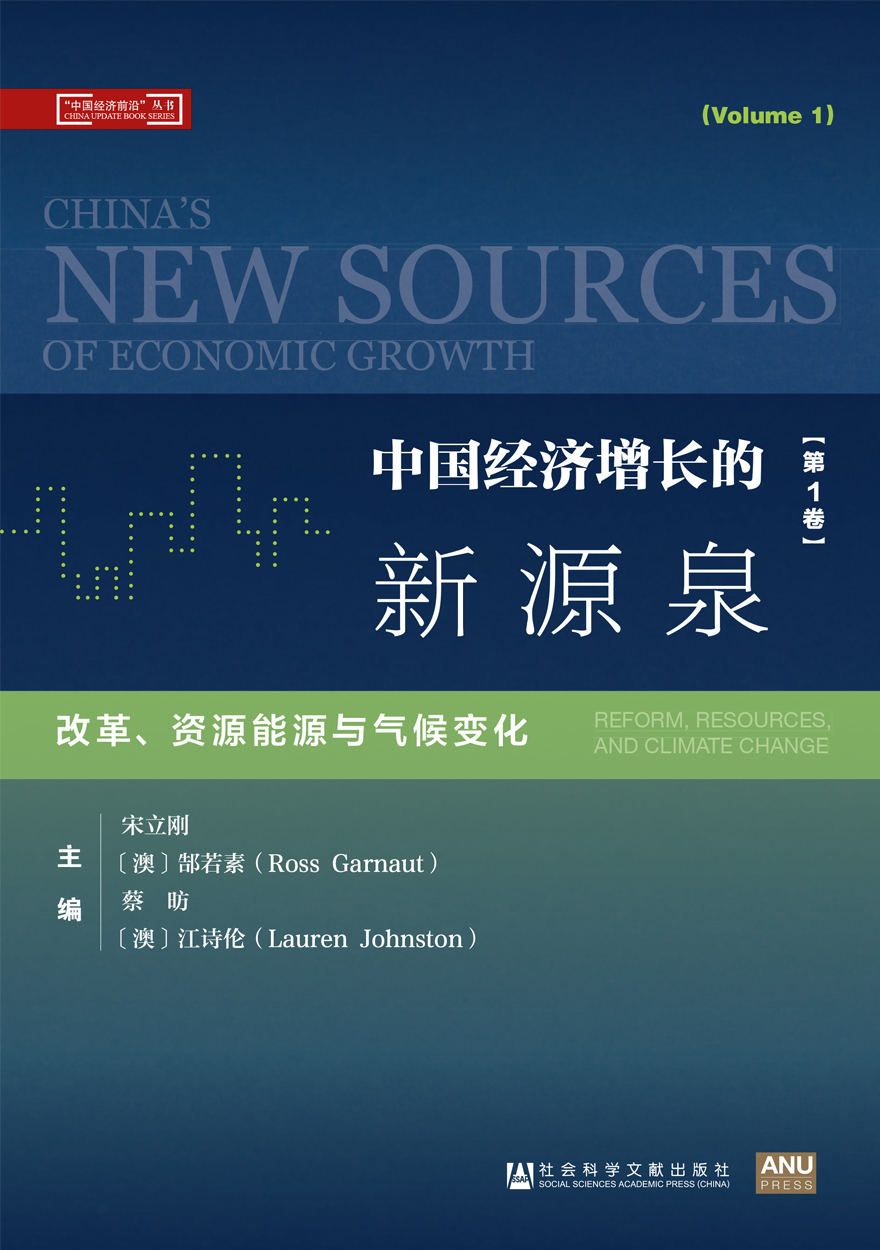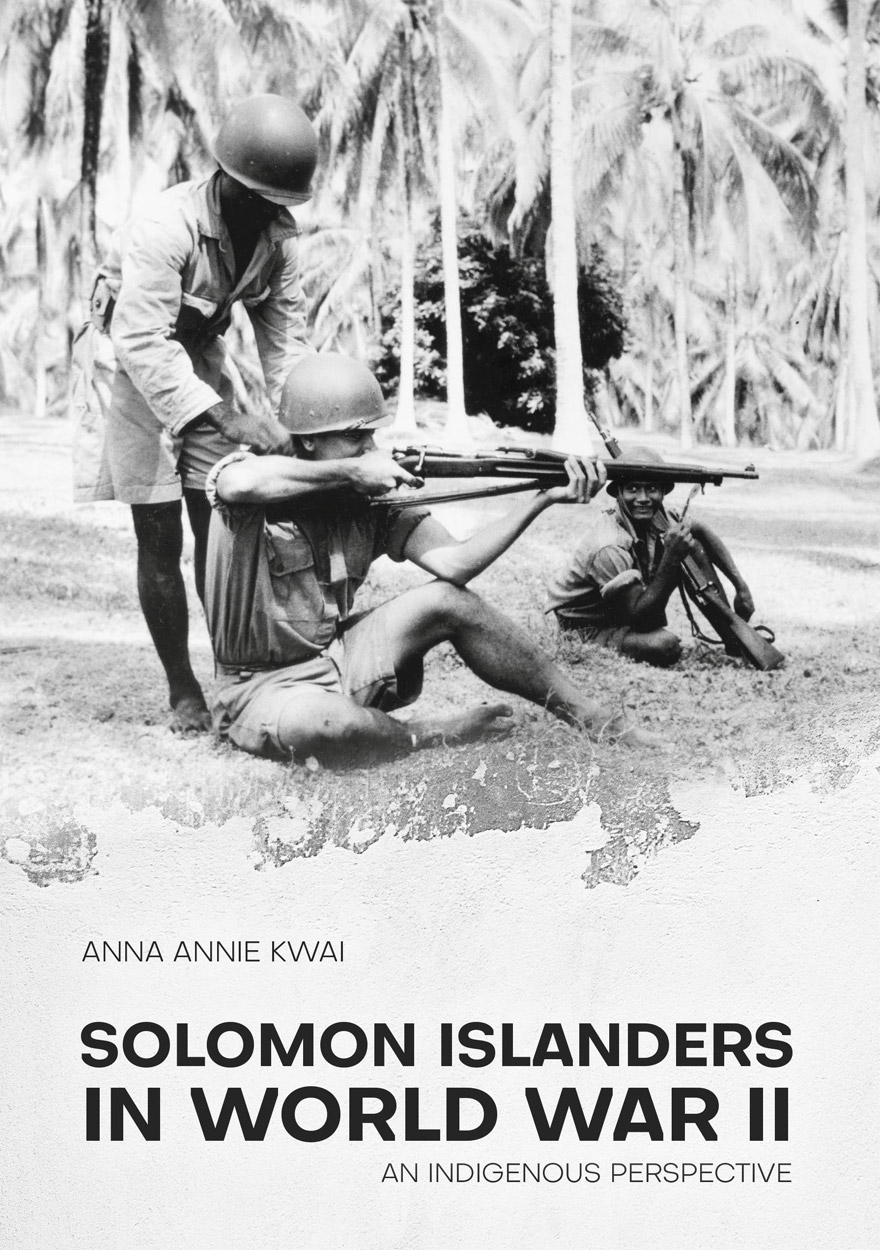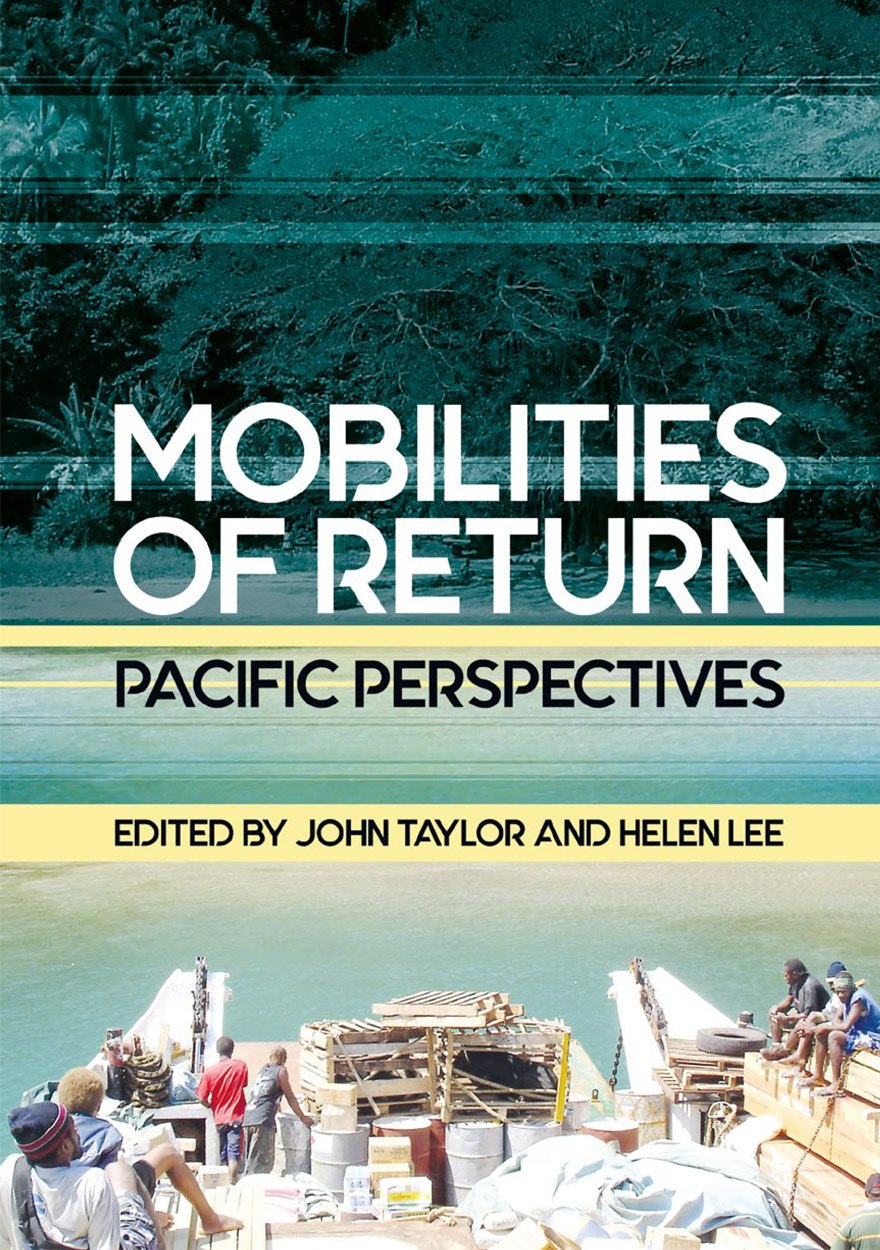Search titles
Displaying results 361 to 370 of 1136.

East Asia Forum Quarterly: Volume 10, Number 1, 2018 »
Publication date: March 2018
East Asia Forum Quarterly grew out of East Asia Forum (EAF) online, which has developed a reputation for providing a platform for the best in Asian analysis, research and policy comment on the Asia Pacific region in world affairs. EAFQ aims to provide a further window onto research in the leading research institutes in Asia and to provide expert comment on current developments within the region. The East Asia Forum Quarterly, like East Asia Forum online, is an initiative of the East Asia Forum (EAF) and its host organisation, the East Asian Bureau of Economic Research (EABER) in the Crawford School of Economics and Government in the College of Asia & the Pacific at The Australian National University.
Download for free
Not available for purchase

Land Use in Australia »
Past, Present and Future
Edited by: Richard Thackway
Publication date: February 2018
Land Use in Australia: Past, Present and Future, is a compilation of invited chapters from Australia’s leading specialists in land use policy and planning and land management.
Chapters present many widely recognised issues involved in Australia’s land use policy and planning, including limited understanding and poor awareness of:
the rich history of poor decisions on land use planning and management across different levels of government
the discontinuities between providers of national biophysical information
the tools, data and information to improve national land use decision-making outcomes
the poor synthesis and integration between science to policy to natural resource management and resource condition
the benefits of land use practitioners engaging in connection, cooperation, mutual inquiry and collective social learnings.
The aims of the book are threefold: 1) provide a review of the current status of land use policy and planning in Australia; 2) provide a resource to inform and influence the development of land use policy and planning; and 3) provide a sound contribution to Australia’s public–private land use debates in the future.
The audience for the book includes government and non-government land management agencies from state and national bodies, universities and researchers.

China's New Sources of Economic Growth: Vol. 1 (Chinese version) »
改革、资源能源与气候变化
Edited by: 宋 立刚, Ross Garnaut, 蔡 昉, Lauren Johnston
Publication date: February 2018
本书针对近年来中国经济增速的下滑,从供给侧角度出发,探讨中国如何启动经 济增长的新源泉,论证了通过改革进一步提高劳动生产率的重要性。全书分为两个部 分,第一部分为“改革与宏观经济发展”,主要内容包括宏观经济的展望、新经济增 长模式、新型城镇化、互联网金融的发展、供给侧结构性改革、中国的全球投资、农 民工的储蓄与消费行为、证券市场的泡沫检验、企业层面的杠杆率与去杠杆进程等;第二部分为“资源、能源、环境与气候变化”,主要内容包括中国低碳城市发展、能 源政策的变化、钢铁产业重组、工业用水和能耗趋势、水资源和森林资源的保护、电 力行业与环境保护的关系以及中国气候环境战略面临的挑战等。
Chinese print version of this book is available from Social Science and Academic Press

Cascades of Violence »
War, Crime and Peacebuilding Across South Asia
Authored by: John Braithwaite, Bina D’Costa
Publication date: February 2018
War and crime are cascade phenomena. War cascades across space and time to more war; crime to more crime; crime cascades to war; and war to crime. As a result, war and crime become complex phenomena. That does not mean we cannot understand how to prevent crime and war simultaneously. This book shows, for example, how a cascade analysis leads to an understanding of how refugee camps are nodes of both targeted attack and targeted recruitment into violence. Hence, humanitarian prevention also must target such nodes of risk. This book shows how nonviolence and nondomination can also be made to cascade, shunting cascades of violence into reverse. Complexity theory implies a conclusion that the pursuit of strategies for preventing crime and war is less important than understanding meta strategies. These are meta strategies for how to sequence and escalate many redundant prevention strategies. These themes were explored across seven South Asian societies during eight years of fieldwork.

Value for Money »
Budget and financial management reform in the People's Republic of China, Taiwan and Australia
Publication date: January 2018
The Greater China Australia Dialogue on Public Administration has held annual workshops since 2011 on public administration themes of common interest to the People’s Republic of China, Taiwan and Australia.
This book presents and discusses a selection of papers developed from the Dialogue’s fifth workshop held in late 2015 hosted by the National Taiwan University in Taipei. The theme, ‘Value for Money’, focused on budget and financial management reforms, including how different nations account for the relative performance of their public sectors.
All governments face the challenge of scarce resources requiring budgetary management processes for identifying the resources required by and available to government, and then for allocating them and ensuring their use or deployment represents value for money. Such budgetary and financial management processes need to inform decision-making routinely and protect the integrity of the way public resources are used – with some public accountability to indicate that their uses are properly authorised and reflect the policies of legitimate government leaders.
The chapters in this book explore budgeting and financial management in three very different jurisdictions: Australia, the People’s Republic of China and the Republic of China (Taiwan). These activist and at times innovative countries are keen to analyse and reflect upon each other’s policy achievements and patterns of public provision. They are keen to learn more about each other as their economic and social engagement continues to deepen. They are also conscious that fundamental differences exist in terms of economic development and global strategic positioning, and levels and philosophies of political development; to an extent these differences are representative of differences amongst countries around the globe.

Asian Economic Integration in an Era of Global Uncertainty »
Edited by: Shiro Armstrong, Tom Westland
Publication date: January 2018
The Pacific Trade and Development (PAFTAD) conference series has been at the forefront of analysing challenges facing the economies of East Asia and the Pacific since its first meeting in Tokyo in January 1968.
The 38th PAFTAD conference met at a key time to consider international economic integration. Earlier in the year, the people of the United Kingdom voted to leave the European Union and the United States elected Donald Trump as their next president on the back of an inward-looking ‘America First’ promise. Brexit and President Trump represent a growing, and worrying, trend towards protectionism in the North Atlantic countries that have led the process of globalisation since the end of the Second World War.
The chapters in the volume describe the state of play in Asian economic integration but, more importantly, look forward to the region’s future, and the role it might play in defending the global system that has underwritten its historic rise. Asia has the potential to stand as a bulwark against the dual threats of North Atlantic protectionism and slowing trade growth, but collective leadership will be needed regionally and difficult domestic reforms will be required in each country.

Made in China Journal: Volume 2, Issue 4, 2017 »
Edited by: Ivan Franceschini, Nicholas Loubere
Publication date: December 2017
This issue includes a series of essays that examine different declinations of precarity experienced by Chinese workers. The contributions explore precarity from both conceptual and empirical points of view, focussing on aspects such as the nexus between precarious work and migration, the contentious relationship between precarity and class, new divisions of labour in the Chinese workplace, the consequences of layoffs in the state sector, and the fallout of the ongoing environmental crackdown.
Download for free
Not available for purchase

A Long Way to Go »
Irregular Migration Patterns, Processes, Drivers and Decision-making
Edited by: Marie McAuliffe, Khalid Koser
Publication date: December 2017
A Long Way to Go: Irregular Migration Patterns, Processes, Drivers and Decision-making presents the findings of a unique migration research program harnessing work of some of the leading international and Australian migration researchers on the challenging and complex topic of irregular maritime migration. The book brings together selected findings of the research program, and in doing so it contributes to the ongoing academic and policy discourses by providing findings from rigorous quantitative, qualitative and mixed methods research to support a better understanding of the dynamics of irregular migration and their potential policy implications.
Stemming from the 2012 Expert Panel on Asylum Seekers report, the Irregular Migration Research Program commissioned 26 international research projects involving 17 academic principal researchers, along with private sector specialist researchers, international organisations and policy think tanks. The centrepiece of the research program was a multi-year collaborative partnership between the Department of Immigration and Border Protection and The Australian National University’s Crawford School of Public Policy. Under this partnership, empirical research on international irregular migration was commissioned from migration researchers in Australia, Indonesia, Iran, the Netherlands, Sri Lanka and Switzerland.

Solomon Islanders in World War II »
An Indigenous Perspective
Authored by: Anna Annie Kwai
Publication date: December 2017
The Solomon Islands Campaign of World War II has been the subject of many published historical accounts. Most of these accounts present an ‘outsider’ perspective with limited reference to the contribution of indigenous Solomon Islanders as coastwatchers, scouts, carriers and labourers under the Royal Australian Navy and other Allied military units. Where islanders are mentioned, they are represented as ‘loyal’ helpers. The nature of local contributions in the war and their impact on islander perceptions are more complex than has been represented in these outsiders’ perspectives. Islander encounters with white American troops enabled self-awareness of racial relationships and inequality under the colonial administration, which sparked struggles towards recognition and political autonomy that emerged in parts of the British Solomon Islands Protectorate in the postwar period. Exploitation of postwar military infrastructure by the colonial administration laid the foundation for later sociopolitical upheaval experienced by the country. In the aftermath of the 1998 crisis, the supposed unity and pride that prevailed among islanders during the war has been seen as an avenue whereby different ethnic identities can be unified. This national unification process entailed the construction of the ‘Pride of our Nation’ monument that aims to restore the pride and identity of Solomon Islanders.

Mobilities of Return »
Pacific Perspectives
Edited by: John Taylor, Helen Lee
Publication date: December 2017
In recent decades, the term ‘mobility’ has emerged as a defining paradigm within the humanities. For scholars engaged in the multidisciplinary topics and perspectives now often embraced by the term Pacific Studies, it has been a much more longstanding and persistent concern. Even so, specific questions regarding ‘mobilities of return’—that is, the movement of people ‘back’ to places that are designated, however ambiguously or ambivalently, as ‘home’—have tended to take a back seat within more recent discussions of mobility, transnationalism and migration.
This volume situates return mobility as a starting point for understanding the broader context and experience of human mobility, community and identity in the Pacific region and beyond. Through diverse case studies spanning the Pacific region, it demonstrates the extent to which the prospect and practice of returning home, or of navigating returns between multiple homes, is a central rather than peripheral component of contemporary Pacific Islander mobilities and identities everywhere.



